 Practice Test
Training
Regulations
Security FAQs
Member Support
Sign In
Join
Practice Test
Training
Regulations
Security FAQs
Member Support
Sign In
Join
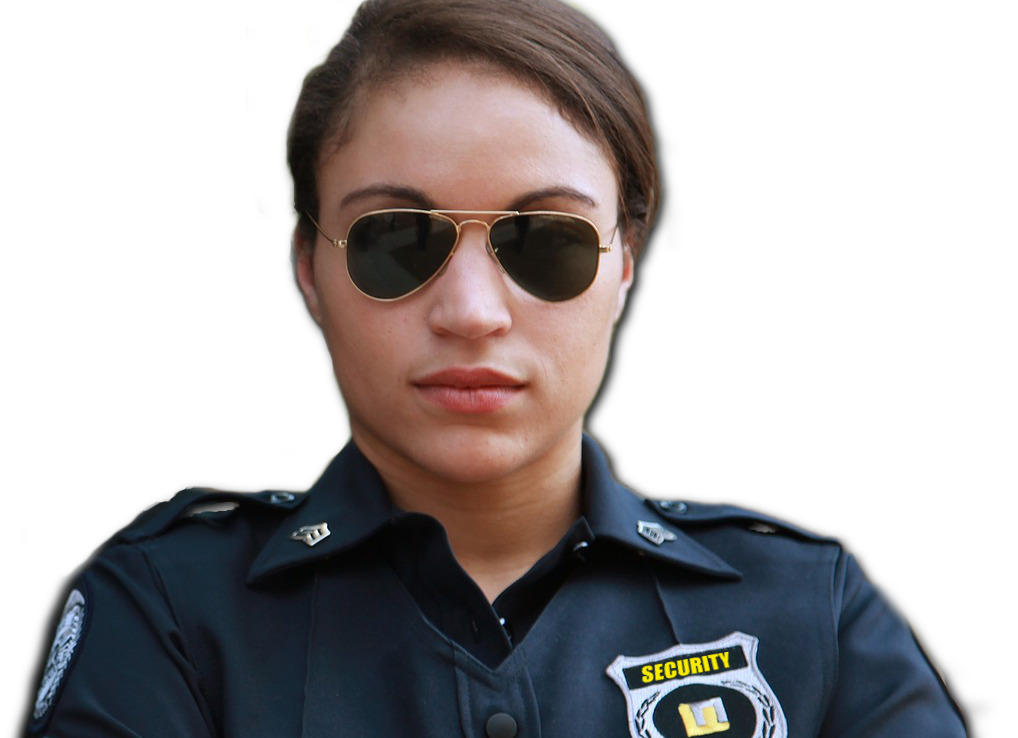
LAST EDIT September 28, 2022
So, you have decided to go for your security guard license? Congratulations, it’s a good choice. Before we start, one important note for some context: each state has its own security licensing requirements, and some have none at all. Additionally, some of the licensing states have tests, others do not.
Not all states refer to a security guard license, as a license; some call it a certification or registration. For the sake of simplicity, we will use the term license.
Item 1: State Licensing Policy
First and foremost, state regulators need to know that you understand their polices. As you might imagine, they take these polices very seriously. If you breech their polices and they have to take away your license—they don’t want you to have any excuse for not knowing the rules.
Many regulators publish their rules in a PDF document that you can download from their site. You should download this document and review it carefully. Pay special attention to any requirement on you, the license holder, because that’s what they are likely to test for.
For example, check out this sample test question.
Which best describes an obligation of a private security license holder to provide immediate notification to the state licensing agency?
A. There are no notice requirements.
B. The license holder takes a vacation from work for more than two weeks.
C. The license holder changes his home address, leaves his employing security agency or is hired by another agency, or is arrested.
D. The license holder becomes sick and has a doctor's note.
Answer C is the correct answer. It contains common notification requirements. The state wants to know where you live, who you work for, and if you have been arrested.
Need help tracking down your state’s regulations? Visit this page. It links to a list of each state’s regulatory entity and the link to their site. Navigate to their site and download their regulations. It’s probably a PDF document and by carefully studying this document you will be prepared for all of the state licensing policy questions.
Item 2. The Role of the Officer
This category of questions seeks to ensure the officer’s self-awareness. Those conducting the test need to know the new security officer understands that he’s not a police officer and doesn’t have police powers, but is prepared for the role of making and documenting his observations.
Check out this question.
Which statement best expresses the arrest powers of unarmed security officers in most jurisdictions?
A. The licensed security officer can never make an arrest.
B. The licensed security officer may temporarily detain an individual without arresting him.
C. The licensed security officer has the same arrest power as the average citizen and may make a private person’s arrest.
D. Because he has a license, the security officer has the same detention authority as law enforcement.
In most jurisdictions, Answer C is the correct answer to this question. Security officers are endowed with arrest power, but it’s the exact same arrest power as the average citizen. So, the officer’s security license doesn’t grant him any additional authority to make an arrest.
Take a look at this question:
Which statement best defines the role of the unarmed security officer?
A. Afford protection to people and property and information by providing security assistance and observing and reporting irregularities.
B. Sign search warrants, issue subpoenas and contempt orders.
C. Enforce state law, local ordinance, site policy and post orders.
D. Only enforce felony laws but not high crimes or misdemeanors.
This question seeks to ensure that you aren’t confusing the role of the security officer with the job of the police officer. It’s not your job to enforce laws, it’s your responsibility to provide security assistance and make observations and answer A best describes this role.
What is the commonly accepted name for the document that directly governs the conduct of an officer while on duty?
A. The Prime Directive
B. Post Orders
C. State Statutes
D. City Ordinances
Most security companies create a list of “post orders” for each site. This document contains information such as best patrol policies and procedures for your post. Upon assignment to your first site you will likely be asked to review the orders and sign that you have read and understand them.
Let’s take a quick look at one more question in this category.
During his shift, the security guard must practice situational awareness. Which example best illustrates situational awareness?
A. A security officer asks his supervisor to grade the officer’s on-the-job performance.
B. A security auditor conducts a site assessment and makes the client aware of deficiencies.
C. The security officer constantly monitors his surroundings and stays aware of site conditions in real time.
D. The site supervisor updates the post orders with the latest directives from the home office.
“Situational awareness” is one of those terms you should become familiar with. It’s essentially the mindset of always paying attention to everything that’s going on around you, i.e., NO SCROLLING SOCIAL MEDIA! But, that’s a rant for another day. Choose answer C.
Item 3. Maintenance, First Aid and Fire Prevention
Maintenance, first aid and fire prevention aren’t necessarily what someone expects when they think of a security guard; and it’s probably easy to overlook this subject matter. But, that’s a mistake: It’s very likely to appear on your test. That’s because, at many sites, the security professional is the first authority figure to respond to an emergency and the state agency wants to know that you will be prepared to respond.
In one venue the officer might be required to monitor the pressure of a large boiler system. In another he may need to watch for icy conditions on sidewalks and apply ice melt. Or he may need to respond whenever a maintenance alarm system has been triggered and equipment must be shut down.
Or, he’s the first responder to a fire. And, thus, here’s perhaps the most important item you need to know in this category: Learn about the types of fires and the classifications of fire suppressants.
Check this out.
Upon assignment to a new site, the security officer notices that all of the site’s fire extinguishers suppress Class C fires.
What is the source of a Class C fire?
A. Class C fires are caused by rain.
B. A Class C fire is a fire started by electricity.
C. Class C fires are started by wildfires as they rage out of control.
D. Class C fires are those with wood as a fuel source.
Many fire extinguishers are labeled with color codes. These codes describe the types of fire they are designed to put out.
Class C fires are fires that have an electrical component as their source. This contrasts with Class A fires which are fueled by ordinary combustibles such as paper or wood and Class B fires that are fueled by liquids and gases.
Or, perhaps the following question will also appear on your exam.
A grease fire has started in the kitchen of a large restaurant. The security officer grabs a fire extinguisher and rushes to respond. What class of fire extinguisher will put out a grease fire?
A. Class A
B. Water
C. Class C
D. Class K
The second question is extremely important knowledge for those who work at a site where there is potential for oil or grease fires. Grease fires ARE NOT suppressed with water. Class K extinguishers are designed to put out oil and grease fires.
Select the best description of a CPR certification.
A. It demonstrates the officer’s awareness of cardiopulmonary resuscitation techniques.
B. It’s a certification program provided by the American Red Cross, American Heart Association, National Safety Council and other similar groups.
C. Known as the Certified Public Responder license, CPR allows the officer to certify his response to an incident.
D. Answers A and B are both correct.
You will choose Answer D. While CPR most likely will not be required by the state, the state licensing agency may want to know that you know the importance of the certification and how to get one.
Item 4. Ability To Be a Credible Witness
State officials want to know that you are prepared to observe and then credibly describe the who, what, when, where and how of an event; know the difference between a “fact” and a “conclusion;” can put the details into an organized report; and, know how to explain the incident to law enforcement and if necessary, in court, as a witness for the prosecution.
Here’s an example.
The well-constructed incident report includes the following:
A. The security officer’s speculation and conclusions.
B. The phone and email address of the property manager.
C. The who, what, when, where and how of the incident.
D. A scathing critique of law enforcement's slow response time.
Expect to see this question on your test. And memorize the four Ws and the H: Who, What, When, Where and How.
Who, What, When, Where and How.
Got it?
Here’s the most simple of examples.
“I, SO Smith conducted my 12:30 foot patrol of the parking lot I observed two teenage male subjects, Subject One, a black male wearing blue jeans and a white t-shirt, and Subject Two, a white male wearing a blue shirt with red shorts, tagging the east side of the administration building. As I approached, the subjects dropped two orange spray paint cans and ran off of the property heading northward.” This example incident report includes the who, what, when, where and how of the incident, in a factual narrative that DOES NOT include any speculation, conclusions or opinion. Just the facts – as they happened! Let’s take a look at the two sample questions that require the most detailed reading. Get these right and you should be good to go.
Select the best example of a “conclusion.”
A. The customer opened and drank a beer.
B. The trespasser was injured while attempting to climb the fence.
C. The vagrant intended to steal the cell phone.
D. Five vehicles exited from the property.
In this example, Answer C provides the best example of a conclusion. The other three answers are clearly observable facts while Answer C demonstrates a state-of-mind that’s not an observable fact. Here, the security officer might believe that the vagrant intended to steal a phone, but there’s no way to prove this unless the vagrant stated his intent; in which case, a factual statement would read, “The vagrant stated that he intended to steal the cell phone.”
Now, let’s reverse this exercise.
Select the statement that best illustrates a fact.
A. I observed the vehicle crash into the building.
B. The child was trying to find something to steal.
C. The gang members wanted to tag the wall.
D. The police officer needed me to make a mistake so that he could get my security license revoked.
Answer A should stand out; it's a clear fact. The officer personally observed, and knows, for a fact, that the vehicle crashed into the building. The other answers are just speculation by the security officer.
Finally, now that we know you are aware of how to write a good report, let’s ensure you are prepared to take your report into court and provide testimony.
What steps should the security guard take before he goes to court for either a deposition or witness-stand testimony?
A. Call the attorney for the defense and ask for an advance copy of all questions that will be asked.
B. Carefully review his incident report.
C. Request multiple delays in the court hearings until the defense gets tired and gives up.
D. Carefully coordinate testimony with the prosecution to ensure everyone is on the same page.
Select Answer B. Court proceedings often take place months and even years after the incident. Now, aren't you glad you took the time to write a complete who, what, when, where and how report based on facts and not conclusion? This complete report will allow you to refresh your memory of the incident and will guide your testimony. As you testify, you will stick to your report and won’t allow the opposing legal team to guide you away from your at-the-time, on-the-scene, factual observations of the event.
Item 5. What is changing?
So, what new items should we expect to see on the newest versions of the tests?
Here’s an example of a new question that may appear in response to recent, high-profile security incidents.
Select the answer that best describes the run, hide, fight strategy.
A. There is no such strategy.
B. It’s a simple set of instructions crafted by The Department of Homeland Security.
C. This strategy dictates how a security officer should conduct his patrol.
D. Only law enforcement officers are allowed to practice this technique.
Answer B is correct. In response to ongoing events, state officials in at least one of the big states have incorporated this strategy into their curriculum requirements. Research and become familiar with the term run, hide, fight. A quick Google search will tell you what you need to know.
This article should have provided you with an idea about what to expect on your test. Depending on your state, there are obviously some additional subject categories but these have been some of the most common and if you’ve got a grasp on them, you are likely well prepared to take your test. To analyze the additional subject categories and to see many more sample questions, check out The Security Officer Network’s free unarmed security guide and practice test. These two resources have been used by thousands of potential officers as they have prepared for their tests.
Congratulations again on your decision to become a security officer. I hope you will consider joining us at The Security Officer Network and allowing us to assist you in becoming a truly professional security officer.
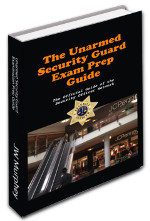
SecurityOfficerHQ.com is the exclusive provider of this free 57 page PDF guide. It features just about everything you need to know before taking the exam and includes The Professional Security Officer eCourse. You may get your copy for free right now only at SecurityOfficerHQ.com! Submit your name and email to receive your copy via email or click here to learn more about this guide.
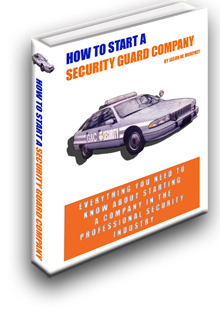
SecurityOfficerHQ.com is the exclusive provider of this free 140 page PDF ebook. Less-comprehensive versions sell for $24, but, for the time being, you may get your copy for free right now only at SecurityOfficerHQ.com! Submit your name and email to receive your copy via email or click here to learn more about the book.
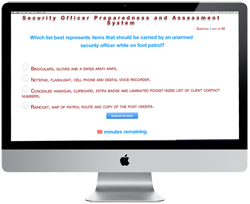
The forty question, free practice exam will test your unarmed security knowledge. It's the perfect test prep for those who must sit an exam before getting licensing.
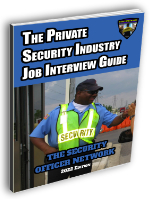
This free job interview guide is the security officer's must-have resource. Get yours here.
© 2012 - 2025 The Security Officer Network
A Product of the 1918 Media Limited Liability Company
Addr: Thirty North Gould Street 2288
Sheridan, Wyoming 82801
Phone: (307) 461-6079
Red Hirundo Rustica Custom CMS and Testing Engine
Disclosures | Privacy | 307.461.6079